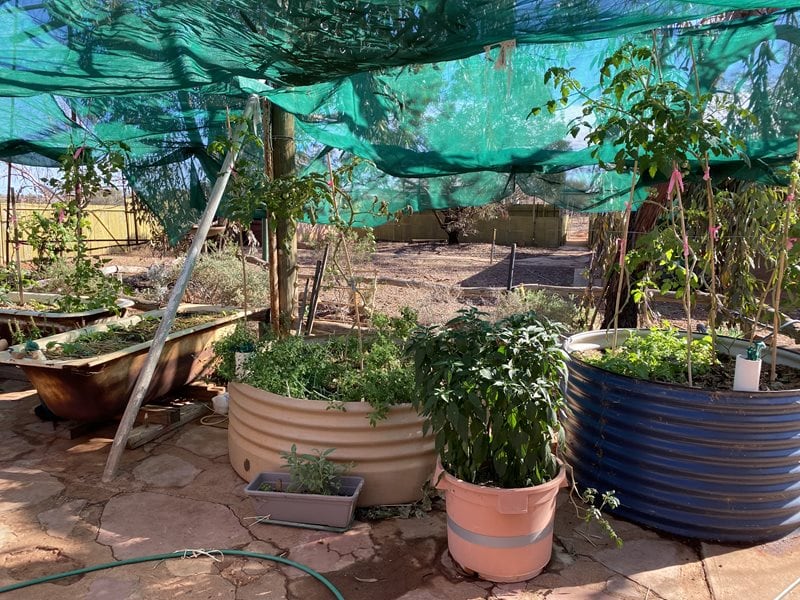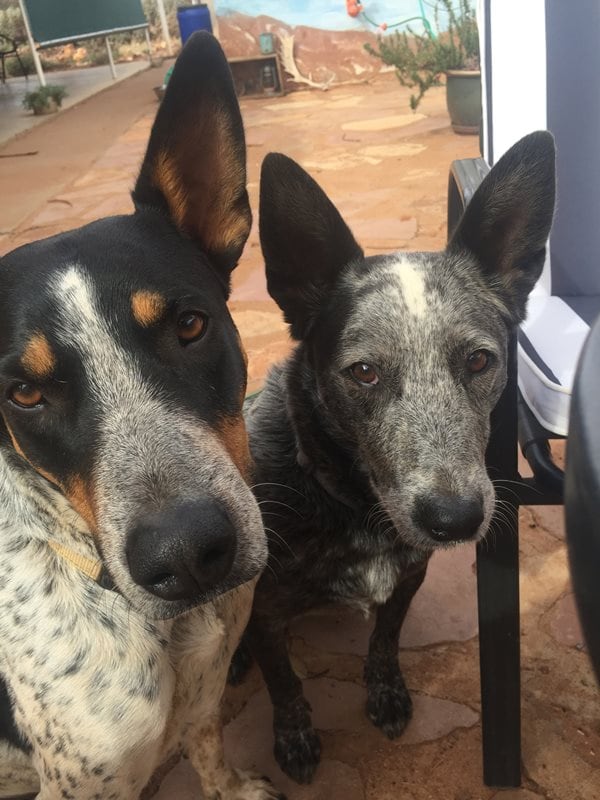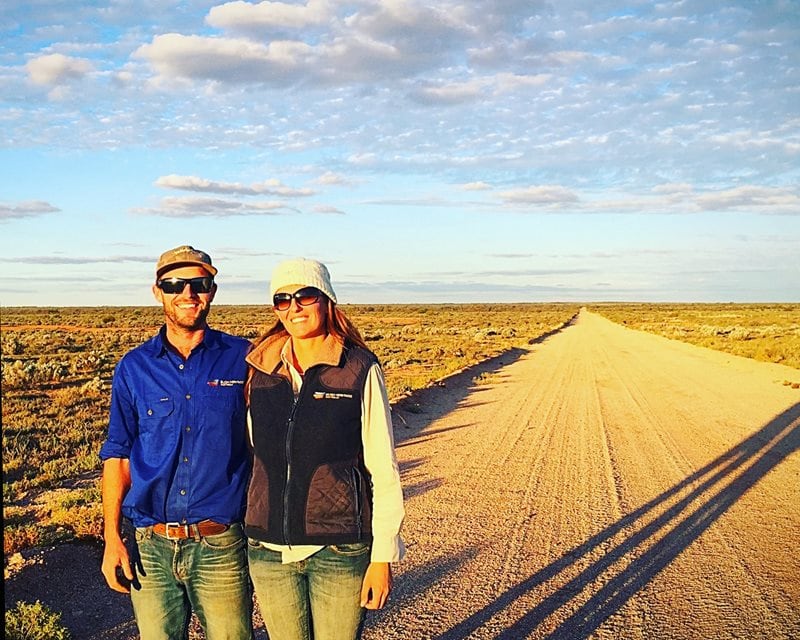Australia’s most isolated people share their advice for keeping busy in lockdown

FOR MANY OF those living in remote parts of Australia, the nearest town is hundreds of kilometres away along bumpy dirt roads, making visitors scarce.
And if that weren’t isolating enough, visiting times are often restricted to the few months of the year between soaring summer temperatures and wet season rains.
Bush Heritage reserve managers and field staff guide us through the uncertain months that lie ahead.
Keep moving
The gyms might be closed, but there are plenty of ways to keep those endorphins flowing. Currently, exercising outdoors is still on the cards. But even if you’re housebound there are plenty of ways to stay fit. Greg Carroll, who works and lives alone on Naree Station Reserve, three hours north of Bourke in northern NSW, recommends creating a routine.
“Set a time that works for you – be it early morning, lunchtime or evening – and try to stick to that as ‘your time’,” he says. “Then track your exercises so you can see your improvements.”
There are plenty of household items that can be used as weights. Try cans of soup or beans, cartons of milk and bags of flour or rice. For something a bit heavier, load up shopping bags with heavy produce such as oranges or apples.
Get creative in the kitchen
Now that you have a workout regime, it’s time to get cooking. Set yourself a challenge to use up all those random ingredients that you never quite knew what to do with (I’m looking at you, buckwheat kernels), and clear out some space in your cupboard.
“One of the things I miss the most living remotely is going out to nice restaurants,” says Bush Heritage ecologist Dr Rebecca Diete, who lives and works on Carnarvon Station Reserve in central Queensland, four hours from the nearest major town.
“To combat this, I treat myself to new and exciting recipes and try to recreate the dishes I’d normally order if I was eating out,” she says.
“Look at that packet of whatever at the back of your cupboard and Google it to see what you might be able to make with it,”
Greg adds. “If you’re not much of a cook, just warn the family that you’re experimenting – hopefully they’ll be supportive!”
Embrace your green thumb
If there’s one thing that living remotely teaches you, it’s how to be self-sufficient and growing your own food is a big part of that.
Kate and Clint Taylor live and work on Bush Heritage’s Bon Bon Station Reserve in South Australia. With their nearest store 180 kilometres away, the more food that Kate and Clint can grow at home, the better.
“There are so many positives that come from growing your own food,” Kate says.
“We love gardening and we’re rewarded with picking fresh produce each day for breakfast, lunch and dinner.”
Greg agrees. “Helping a plant grow is very fulfilling and it doesn’t require a lot of space.
To get started, find a pot or a makeshift pot, get a cutting or a seed, and place it somewhere that gets a decent amount of light.”
Can’t get to a nursery? No worries. You can harvest your own seeds from the fruit and vegetables you buy from the supermarket. From tomatoes to cucumbers, beetroots and broccoli, a quick Google will tell you everything you need to know.

Teach your dog a new trick
If you’re lucky enough to have a canine companion, this tip is sure to result in hours of entertainment.
Kate recommends jumping online to find instructional videos for specific tricks.
“We have a couple of dogs on Bon Bon and have taught them how to roll over, spin, play dead, speak (we may regret this later) and bow. They love learning! Next, I’m going to teach them how to pick up after themselves and put their toys away…”

There’s an app for that
“We have apps for everything,” Kate says. “Spanish lessons (Duolingo), our gym routines (Fitbod), mindfulness and meditations (Calm), Reading (Blinkist and Libby) and brain training games (Lumosity). Yes, some cost money, but if we weren’t living remotely we would be paying for gym memberships, yoga classes, Spanish lessons etc., so subscribing isn’t as bad as it seems.”
Apps can also be a great way to stay connected. “I couldn’t imagine living as remotely as I am now without the internet,” Rebecca says. “I find it important to not only call and text friends and family regularly but to also make sure we video call so we can see each other’s faces… This helps me to maintain a sense of community,” she says.
Clint recommends figuring out which of your favourite games can be played virtually via Skype or Zoom and lining up virtual games nights.
Articulate, charades and quizzes can all be played on these platforms,” he says.

Assign space for different activities
When you live, work and play at home, boundaries can quickly start to blur – particularly if you’re also looking after small humans. Dr Jessica Stingemore, who manages and lives on Charles Darwin Reserve in south-west Western Australia, recommends setting up dedicated areas for different parts of your day.
“For me, this means limiting work strictly to the office or the field, which is harder said than done. We like to keep the couch for relaxing and watching TV, and the bed for sleeping,” she says.
“And remember to take breaks. When I was writing up my PhD thesis I worked on a 45:15 rule – 45 minutes of writing followed by 15 minute break.”
Find the silver lining
The world is going through a kind of collective trauma right now and it’s normal to be feeling anxious, lost or down. Focusing on the positives can help calm your mind; there are some upsides to isolation if you look for them. “When you work from home, there’s no commute and no traffic. I absolutely love that,” Jessica says. “Being forced to stay in one place means more quiet time, too, plus we now have time to send old-fashioned handwritten letters … It’s also great for saving money.”
“The modern world runs 24/7 and many people have lost the ability to switch off,” says Paul Hales, manager of Yourka Reserve in far north Queensland.
“This is a good chance for people to turn off all their devices and TVs and learn to live with themselves.”
And remember, this too shall pass.
Before we know it, we will be back out exploring Australia’s spectacular bush landscapes with a refreshed mindset, and maybe even bigger biceps.
Story courtesy of Bush Heritage Australia.




